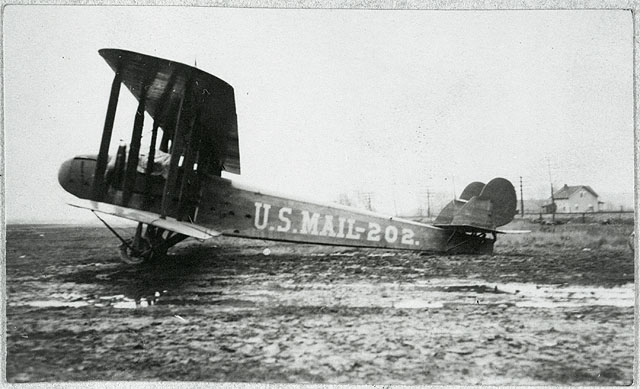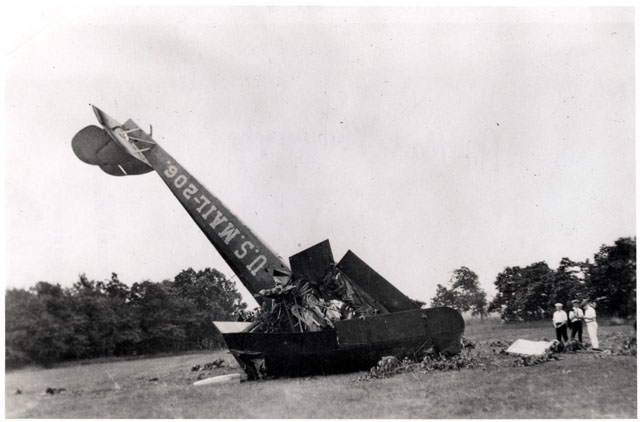
Courtesy of the National Air and Space Museum
Designed by Glenn L. Martin in 1918, the MB-1 was designed to outperform the current gold standard for a heavy bomber, the British Handley Page. Martin’s offering was faster, more powerful, had more cargo area, and flew in prototype form in August of 1918, a scant few weeks before the end of the war.
Because of the timing, the US government had little interest in the MB-1, and only a handful of MB-1s were produced. Six of those MB-1s were built as cargo carriers and bought by the Post Office Department. Their high power, load capacity, and long range made them perfect for flying the mail. The POD decided not to pursue the Martin Bomber for two reasons. First, the bomber required a long landing field, being a massive (for the time) three and a half tons when empty. As the Airmail Service was sorely lacking large airfields, this made the Martin impractical. Second, the MB-1 was expensive, compared to the DH-4’s which the Department was acquiring for free and modifying for only a small amount of resources. This was very important as the Airmail Service was severely lacking in funds.

